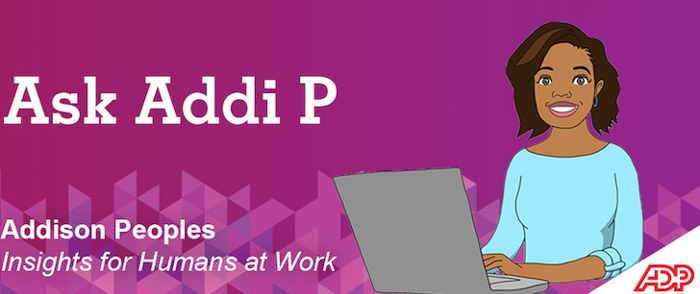Ask Addi P.: What Is HCM?

Dear Addi P.:
What is HCM? Why is it so important and how can it improve my organization's bottom line? What aspects of HCM should finance leaders be taking an interest in?
- Interested in HCM
Dear Interested,
According to Gartner, Human Capital Management (HCM) is "a set of practices related to people resource management." These practices focus on three categories: talent acquisition, workforce management and optimization. Traditionally, HCM involves core administrative support such as payroll, benefits and personnel administration. It also includes more strategic functions such as employee performance management, onboarding, recruiting and career development.
Effective HCM is important for finance leaders because employee compensation and benefits are generally the single the largest expense for most organizations, especially those with "knowledge workers." When you factor in recruiting and training, these numbers soar even higher.
Improving the Bottom Line Through HCM
In thinking about HCM and costs, finance leaders understand that decreasing costs usually has a more direct effect on profit than increasing revenue. For example, if your profit margin is 10 percent, an equivalent $1,000 expense reduction would require $10,000 in additional revenue to have the same impact. For a 2 percent profit margin, that $1,000 expense reduction now requires $50,000 in additional sales! Since employee-related expenses are such a major cost component, by improving the efficiency and effectiveness of your HCM processes, you can significantly affect your organization's profitability.
This is part of why employee engagement is such a big topic. Happy employees are engaged employees. Workers like to feel challenged, appreciated and supported.And when they do, they tend to stay which reduces turnover, saving money on recruiting, training, and lost productivity of having empty seats.
According to Business News Daily, benefits can also be an important factor in managing costs. While the benefits you provide to your employees will be similar across different employee demographics, how you provide those benefits may differ. For example, to reduce turnover — and reduce your recruitment and training costs while maintaining higher productivity — your business could offer flexible work options. For more tenured workers, you could promote this benefit as allowing them time to explore post-career options such as hobbies or volunteering or to care for aging parents. For more recent graduates, you could promote this benefit as allowing time to care for children or to pursue a degree.
Talent Management and Bottom Line Improvement
Viewing all employees as important, not just high performers or senior management, can also help you think creatively about improving your HCM processes. Investing in technology to help streamline these processes or to provide self-service can also help. For example, self-service portals that allow employees to view pay stubs, check benefits or request time off can free up HR and administrative time greatly. This in turn can reduce the number of people you need to administer time, leave and benefits or allow those roles to become more focused on more strategic work. Offering individualized online or off-site training options, instead of department-wide, cookie-cutter on-site training, can help employees access the knowledge they need to grow and perform better. There are also interesting software programs that can help you and your employees understand their strengths and coach them toward more effective performance.
Developing metrics for leadership development, career paths, and employee engagement processes is also critical. While measuring and focusing on individual employees can be more time-consuming, the impact of getting it right is potentially huge. Understanding employees' needs and interests, helping them understand how their role in the organization matters, and offering them interesting work and opportunities are all factors that increase engagement and retention, which in turn, can benefit productivity and reduce turnover.
What is HCM? When managed correctly, it allows you to effectively understand and manage your workforce across the entire organization which in turn, has positive effects on the bottom line.
Take Care,
Addi P.
Addi P is a digital character who represents the human expertise of ADP. The questions and challenges come from professionals who manage people at companies of all sizes. The advice comes from ADP experts who have a deep understanding of the issues and a passion for helping leaders create a better workplace. If you have a challenge you'd like to pose for Addi P, complete this simpleform.
The information provided here is for general informational purposes only and not legal, accounting or tax advice. The information and services ADP provides should not be deemed a substitute for the advice of a professional who can better address your specific concern and situation. Any information provided here is by nature subject to revision and may not be the most current information available on the subject matter discussed.
To learn more, please read the following:
Business Goals in New Markets: HCM to Support Global Growth



